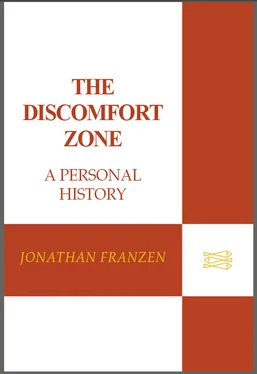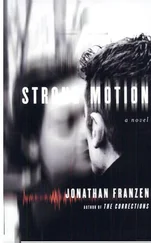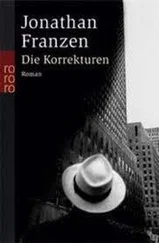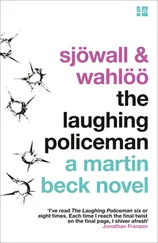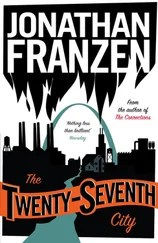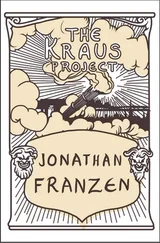Jonathan Franzen - The Discomfort Zone
Здесь есть возможность читать онлайн «Jonathan Franzen - The Discomfort Zone» — ознакомительный отрывок электронной книги совершенно бесплатно, а после прочтения отрывка купить полную версию. В некоторых случаях можно слушать аудио, скачать через торрент в формате fb2 и присутствует краткое содержание. Город: Ney York, Год выпуска: 2006, ISBN: 2006, Издательство: Farrar, Straus and Giroux, Жанр: Современная проза, на английском языке. Описание произведения, (предисловие) а так же отзывы посетителей доступны на портале библиотеки ЛибКат.
- Название:The Discomfort Zone
- Автор:
- Издательство:Farrar, Straus and Giroux
- Жанр:
- Год:2006
- Город:Ney York
- ISBN:918-0-312-94841-2
- Рейтинг книги:3.5 / 5. Голосов: 2
-
Избранное:Добавить в избранное
- Отзывы:
-
Ваша оценка:
- 80
- 1
- 2
- 3
- 4
- 5
The Discomfort Zone: краткое содержание, описание и аннотация
Предлагаем к чтению аннотацию, описание, краткое содержание или предисловие (зависит от того, что написал сам автор книги «The Discomfort Zone»). Если вы не нашли необходимую информацию о книге — напишите в комментариях, мы постараемся отыскать её.
Notable Book of the Year The Discomfort Zone
The Discomfort Zone — читать онлайн ознакомительный отрывок
Ниже представлен текст книги, разбитый по страницам. Система сохранения места последней прочитанной страницы, позволяет с удобством читать онлайн бесплатно книгу «The Discomfort Zone», без необходимости каждый раз заново искать на чём Вы остановились. Поставьте закладку, и сможете в любой момент перейти на страницу, на которой закончили чтение.
Интервал:
Закладка:
My mother called him “oversensitive.” She meant that it was easy to hurt his feelings, but the sensitivity was physical as well. When he was young, a doctor gave him a pinprick test that showed him to be allergic to “almost everything,” including wheat, milk, and tomatoes. A different doctor, whose office was at the top of five long flights of stairs, greeted him with a blood-pressure test and immediately declared him unfit to fight the Nazis. Or so my father told me, with a shrugging gesture and an odd smile (as if to say, “What could I do?”), when I asked him why he hadn’t been in the war. Even as a teenager, I sensed that his social awkwardness and sensitivities had been aggravated by not serving. He came from a family of pacifist Swedes, however, and was very happy not to be a soldier. He was happy that my brothers had college deferments and good luck with the lottery. Among his war-vet colleagues, he was such an outlier on the subject of Vietnam that he didn’t dare talk about it. At home, in private, he aggressively avowed that, if Tom had drawn a bad number, he personally would have driven him to Canada.
Tom was a second-born in the mold of my father. He got poison ivy so bad it was like measles. He had a mid-October birthday and was perennially the youngest kid in his classes. On his only date in high school, he was so nervous that he forgot his baseball tickets and left the car idling in the street while he ran back inside; the car rolled down the hill and punched through an asphalt curb, clearing two levels of a terraced garden, and came to rest on a neighbor’s front lawn.
To me, it simply added to Tom’s mystique that the car was not only still drivable but entirely undamaged. Neither he nor Bob could do any wrong in my eyes. They were expert whistlers and chess players, amazing wielders of tools and pencils, and the sole suppliers of whatever anecdotes and data I was able to impress my friends with. In the margins of Tom’s school copy of A Portrait of the Artist as a Young Man , he drew a two-hundred-page riffle-animation of a stick-figure pole-vaulter clearing a hurdle, landing on his head, and being carted away on a stretcher by stick-figure E.M.S. personnel. This seemed to me a masterwork of filmic art and science. But my father had told Tom: “You’d make a good architect, here are three schools to choose from.” He said: “You’re going to work for Sverdrup.”
Tom was gone for five days before we heard from him. His call came on a Sunday after church. We were sitting on the screen porch, and my mother ran the length of the house to answer the phone. She sounded so ecstatic with relief I felt embarrassed for her. Tom had hitchhiked back to Houston and was doing deep-fry at a Church’s fried-chicken establishment, hoping to save enough money to join his best friend in Colorado. My mother kept asking him when he might come home, assuring him that he was welcome and that he wouldn’t have to work at Sverdrup; but I could tell, without even hearing Tom’s responses, that he wanted nothing to do with us now.
THE PURPOSE OFa comic strip, Schulz liked to say, was to sell newspapers and to make people laugh. His formulation may look self-deprecating at first glance, but in fact it is an oath of loyalty. When I. B. Singer, in his Nobel address, declared that the novelist’s first responsibility is to be a storyteller, he didn’t say “mere storyteller,” and Schulz didn’t say “merely make people laugh.” He was loyal to the reader who wanted something funny from the funny pages. Just about anything — protesting against world hunger; getting a laugh out of words like “nooky” dispensing wisdom; dying — is easier than real comedy.
Schulz never stopped trying to be funny. Around 1970, though, he began to drift away from aggressive humor and into melancholy reverie. There came tedious meanderings in Snoopyland with the unhilarious bird Woodstock and the unamusing beagle Spike. Certain leaden devices, such as Marcie’s insistence on calling Peppermint Patty “sir,” were heavily recycled. By the late eighties, the strip had grown so quiet that younger friends of mine seemed baffled by my fandom. It didn’t help that later “Peanuts” anthologies loyally reprinted so many Spike and Marcie strips. The volumes that properly showcased Schulz’s genius, the three hardcover collections from the sixties, had gone out of print.
Still more harmful to Schulz’s reputation were his own kitschy spinoffs. Even in the sixties, you had to fight through cloying Warm Puppy paraphernalia to reach the comedy; the cuteness levels in latter-day “Peanuts” TV specials tied my toes in knots. What first made “Peanuts” “Peanuts” was cruelty and failure, and yet every “Peanuts” greeting card and tchotchke and blimp had to feature somebody’s sweet, crumpled smile. Everything about the billion-dollar “Peanuts” industry argued against Schulz as an artist to be taken seriously. Far more than Disney, whose studios were churning out kitsch from the start, Schulz came to seem an icon of art’s corruption by commerce, which sooner or later paints a smiling sales face on everything it touches. The fan who wants to see him as an artist sees a merchant instead. Why isn’t he two ponies?
It’s hard to repudiate a comic strip, however, if your memories of it are more vivid than your memories of your own life. When Charlie Brown went off to summer camp, I went along in my imagination. I heard him trying to make conversation with the fellow camper who lay in his bunk and refused to say anything but “Shut up and leave me alone.” I watched when he finally came home again and shouted to Lucy, “I’m back! I’m back!” and Lucy gave him a bored look and said, “Have you been away?”
I went to camp myself, in the summer of 1970. But aside from an alarming personal hygiene situation which seemed to have resulted from my peeing in some poison ivy, and which, for several days, I was convinced was either a fatal tumor or puberty, my camp experience paled beside Charlie Brown’s. The best part of it was coming home and seeing Bob waiting for me, in his new Karmann Ghia, at the YMCA parking lot.
Tom was also home by then. He’d managed to make his way to his friend’s house in Colorado, but the friend’s parents weren’t happy about harboring somebody else’s runaway son, and so they’d sent Tom back to St. Louis. Officially, I was very excited that he was back. In truth, I was embarrassed to be around him. I was afraid that if I referred to his sickness and our quarantine I might prompt a relapse. I wanted to live in a “Peanuts” world where rage was funny and insecurity was lovable. The littlest kid in my “Peanuts” books, Sally Brown, grew older for a while and then hit a glass ceiling and went no further. I wanted everyone in my family to get along and nothing to change; but suddenly, after Tom ran away, it was as if the five of us looked around, asked why we should be spending time together, and failed to come up with many good answers.
For the first time, in the months that followed, my parents’ conflicts became audible. My father came home on cool nights to complain about the house’s “chill.” My mother countered that the house wasn’t cold if you were doing housework all day . My father marched into the dining room to adjust the thermostat and dramatically point to its “Comfort Zone,” a pale-blue arc between 72 and 78 degrees. My mother said that she was so hot . And I decided, as always, not to voice my suspicion that the Comfort Zone referred to air-conditioning in the summer rather than heat in the winter. My father set the temperature at 72 and retreated to the den, which was situated directly above the furnace. There was then a lull, and then big explosions. No matter what corner of the house I hid myself in, I could hear my father bellowing, “LEAVE THE GOD-DAMNED THERMOSTAT ALONE!”
Читать дальшеИнтервал:
Закладка:
Похожие книги на «The Discomfort Zone»
Представляем Вашему вниманию похожие книги на «The Discomfort Zone» списком для выбора. Мы отобрали схожую по названию и смыслу литературу в надежде предоставить читателям больше вариантов отыскать новые, интересные, ещё непрочитанные произведения.
Обсуждение, отзывы о книге «The Discomfort Zone» и просто собственные мнения читателей. Оставьте ваши комментарии, напишите, что Вы думаете о произведении, его смысле или главных героях. Укажите что конкретно понравилось, а что нет, и почему Вы так считаете.
